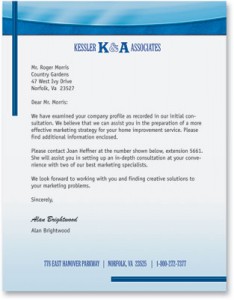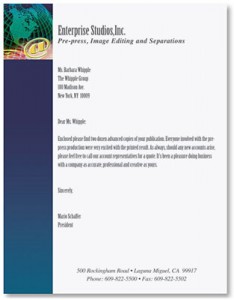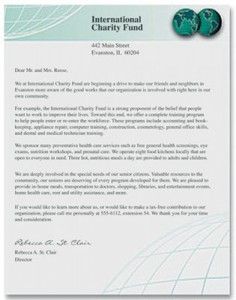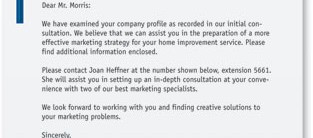 While paper correspondence seems to be falling by the wayside in our fast paced business world, following style, form and function is still a necessity. Regardless of whether you’re sending a letter in an email or via snail-mail, there are rules that still need to be followed. Great business letters, regardless of the method of delivery, are designed as formal communication. This means taking a few things into account when it comes to the style and content.
While paper correspondence seems to be falling by the wayside in our fast paced business world, following style, form and function is still a necessity. Regardless of whether you’re sending a letter in an email or via snail-mail, there are rules that still need to be followed. Great business letters, regardless of the method of delivery, are designed as formal communication. This means taking a few things into account when it comes to the style and content.
First, keep in mind who your intended audience is. If it’s an individual, you’ll want to handle it in a somewhat more personal manner than if you would a group. Also, keep in mind the purpose of the letter versus who will be reading it. Don’t get too technical with someone who won’t understand the references, but don’t underestimate or undervalue the points you’re trying to impress upon the recipient.
One aspect to keep in mind if using regular mail is the stationery used. Having your  business letters on good quality stationery with the company logo embossed on it will always add a huge level of professionalism to any correspondence. Even negative business letters have a better reception when delivered on high quality stationery.
business letters on good quality stationery with the company logo embossed on it will always add a huge level of professionalism to any correspondence. Even negative business letters have a better reception when delivered on high quality stationery.
Writing a great business letter doesn’t mean it has to be stuffy and impersonal. Bringing a level of informality and personable attitude to the letter ensures the person reading it comes away with a sense of satisfaction that they’re working with someone friendly and reasonable. However, don’t be too informal and jokey as that could come across as too flighty and inconsequential. That would actually defeat the purpose of the letter.
Generally, a great business letter will start off with a paragraph introducing the overall scenario. The  second paragraph gives an outline or agenda for the rest of the letter. Subsequent paragraphs will define each section of the outlined areas, and a final paragraph will tie up any loose ends with an encouragement to work towards a successful completion of the purpose of the letter.
second paragraph gives an outline or agenda for the rest of the letter. Subsequent paragraphs will define each section of the outlined areas, and a final paragraph will tie up any loose ends with an encouragement to work towards a successful completion of the purpose of the letter.
Even letters that are simply sent as a thank you will need to follow a similar style. But, after all is said and done, business letters are the backbone of corporate correspondence, and should be handled as such. Nothing of any importance can be started or handled without a great business letter.
